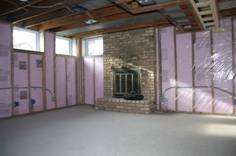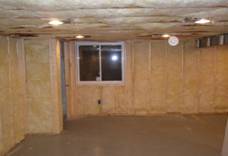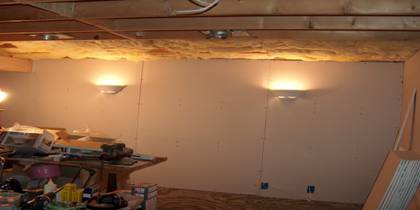The basics of Basement Insulation
by Mark Row
Insulating your basement - A caprice or a necessity?
 Basement insulation, yes or no? This has become a common question now days. The answer is simply YES. However, homeowners often do not think of insulating their basement which is a huge mistake and could have substantial consequences. Namely, heat loss that occurs in uninsulated or poorly insulated basements goes up to 35%! This is why, if you live in an area with a colder climate, the best and very cost effective solution would be properly insulating your basement. Besides, insulated basement walls are less subject to mold and condensation, so your basement will be dryer and thus easier to maintain when properly insulated. Basement insulation includes both wall and ceiling insulation.
Basement insulation, yes or no? This has become a common question now days. The answer is simply YES. However, homeowners often do not think of insulating their basement which is a huge mistake and could have substantial consequences. Namely, heat loss that occurs in uninsulated or poorly insulated basements goes up to 35%! This is why, if you live in an area with a colder climate, the best and very cost effective solution would be properly insulating your basement. Besides, insulated basement walls are less subject to mold and condensation, so your basement will be dryer and thus easier to maintain when properly insulated. Basement insulation includes both wall and ceiling insulation.
Inside or outside wall insulation
Basement walls can be insulated in two ways: inside or outside. It was believed that the outside basement wall insulation was better and more effective. However, in recent years, with the development of new materials, interior basement insulation has become another good solution. There are advantages and disadvantages of both.
When it comes to external basement insulation it keeps the concrete within the thermal mass and reduces the oscillation of temperature if heating and cooling devices stop working. Another advantage of insulating from the outside is the fact that it is easier to install and does not create clutter in your basement since it generates more space than internal insulation. On the other hand, digging the soil around the outside wall is complicated and as such it could be a disadvantage in this process.
However, in most cases it is necessary to install insulation on the inside, just as it is possible that both solutions are needed. The advantages of the internal insulation are that it can be done at any time (in any season), not only when building but also when remodeling, unlike external insulation that is usually done during the construction. Internal insulation can also be more cost-effective. On the other hand, the insulation on the inside is not recommended if there is moisture in the basement, since basement walls generate the outside temperature or the temperature of the soil. Another problem with internal insulation could be electrical wiring, plumbing etc. Here's a list of different aspects of internal and external wall insulation.


Basement ceiling insulation
Another part of your basement that should be insulated is the ceiling. A common way to insulate your basement ceiling is to install fiberglass bat insulation. Insulating the ceiling in the basement will make a protective envelope of your home and it will reduce the height of space in the basement which is one of the biggest problems that homeowners face. Also, it will make your floor above the basement much warmer and thus contribute to saving money on electricity. However, there are also some downsides to this kind of basement insulation. When insulated, your basement ceiling is being completely separated from your house floor, which can be a significant thermal source. The consequence is a much colder basement which can also reflect to your home temperature since cold air from the basement can travel to your home through potential cracks and holes around your electrical wires and plumbing.

Bearing in mind all the advantages of basement insulation, interests for insulating basement are growing. This is why it is important to get familiar with basic ways of insulating your basement, their up- and downsides, especially if you plan to redesign your basement into a residential or commercial space, which has become a common necessity now days.
If you found this article to be helpful, please share it with your friends on Twitter, Facebook and Google+. If you have any questions or comments feel free to write them in the comment section below, I will respond to all of them.
























































































































